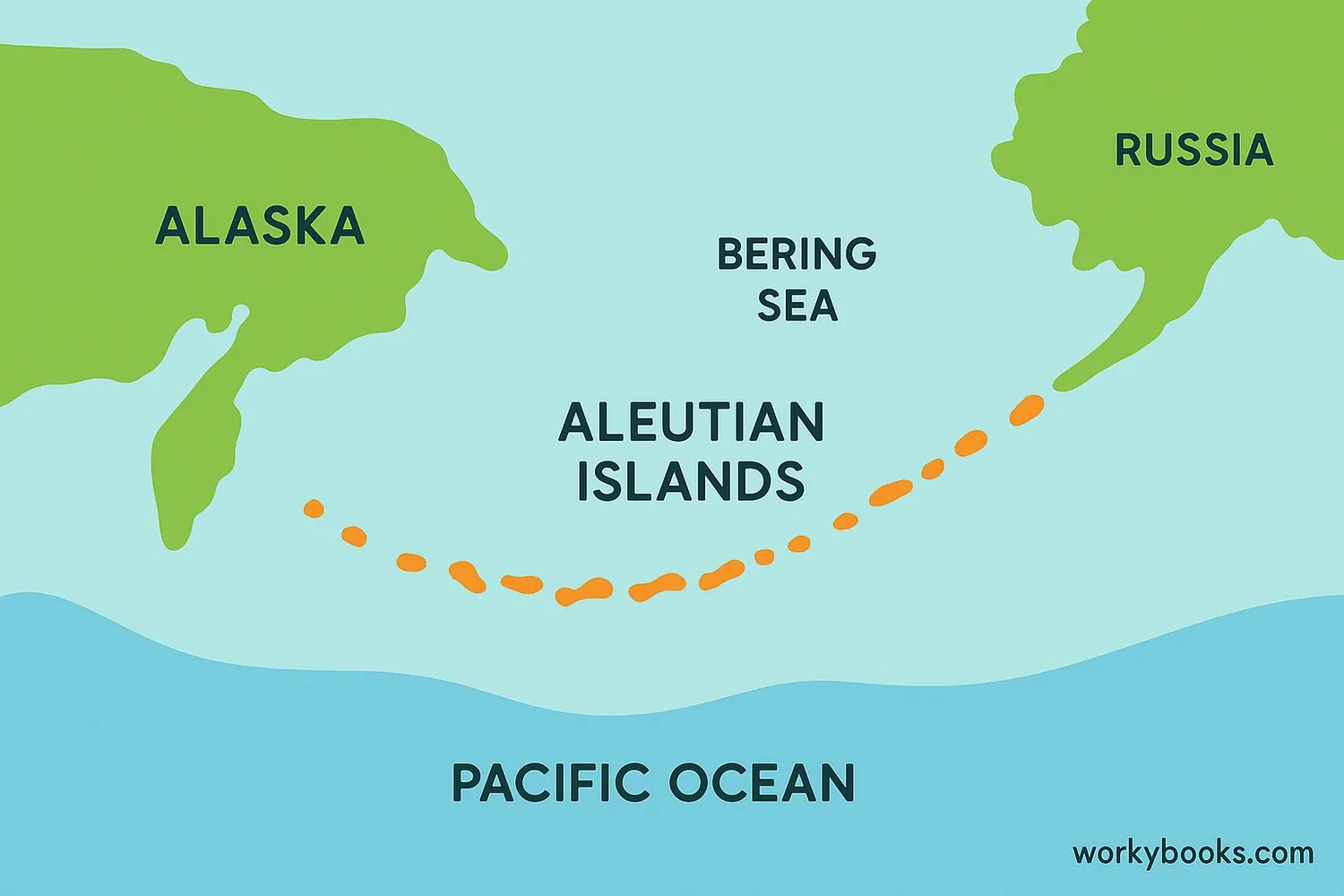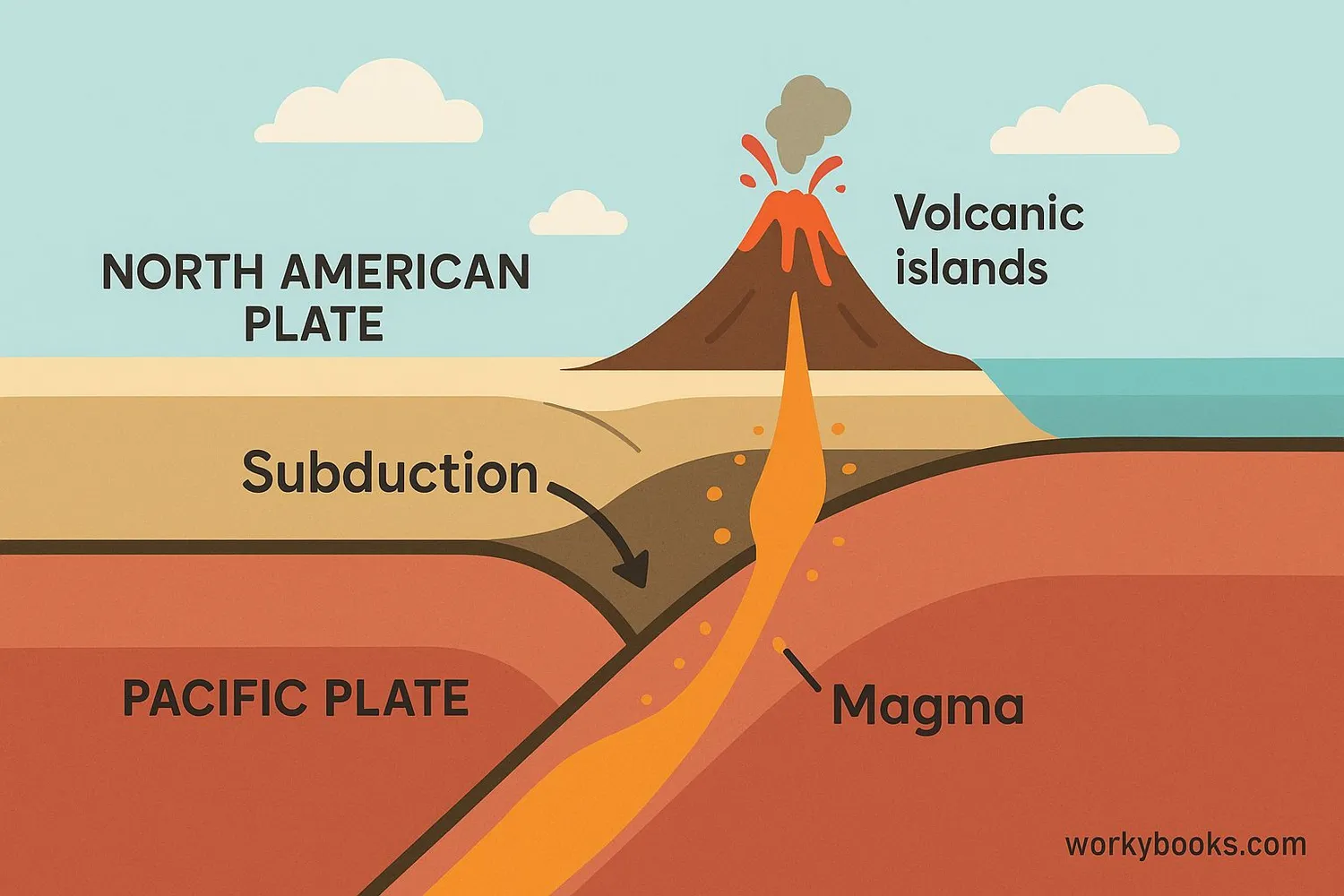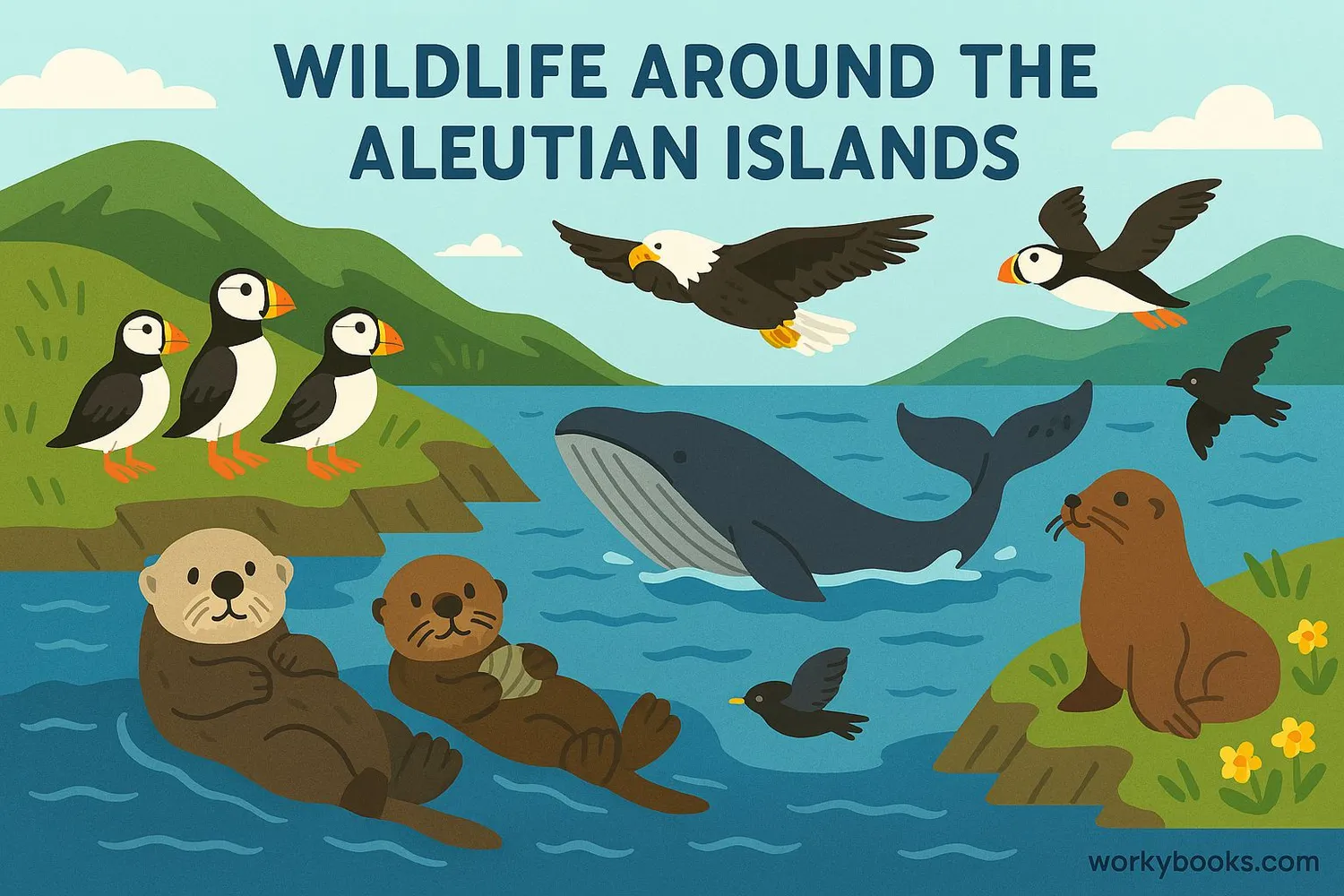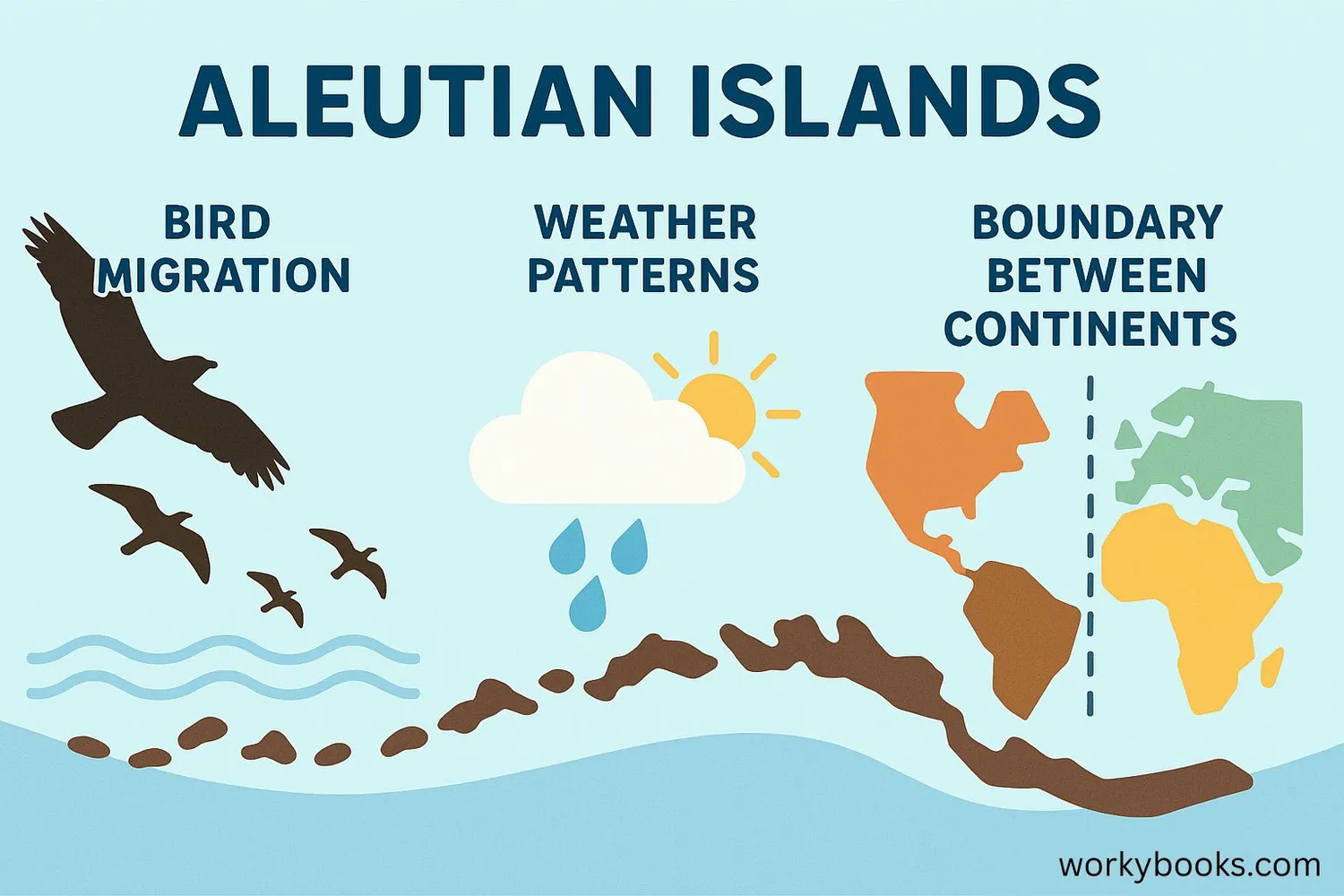Aleutian Islands - Definition, Examples, Quiz, FAQ, Trivia
Discover Alaska's volcanic island chain in the North Pacific
What are the Aleutian Islands?

The Aleutian Islands are a chain of volcanic islands that stretch from Alaska to Russia across the Bering Sea. They form a natural bridge between North America and Asia! This remote island chain:
• Extends about 1,200 miles (1,900 km) from the Alaska Peninsula
• Contains more than 300 islands
• Forms the boundary between the Pacific Ocean and Bering Sea
• Is home to about 8,000 people
These islands are known for their dramatic landscapes with active volcanoes, rugged coastlines, and unique wildlife. The Aleutian Islands are part of the Pacific Ring of Fire, an area famous for earthquakes and volcanic activity.
Geography Fact!
The Aleutian Islands cross the 180° meridian, meaning some islands are in the Eastern Hemisphere and some in the Western Hemisphere!
How the Aleutian Islands Formed

The Aleutian Islands were created by powerful forces deep beneath the Earth's surface! Here's how these volcanic islands formed:
Tectonic Plates
The Pacific Plate slides under the North American Plate
Subduction Zone
One plate dives deep beneath the other
Magma Rises
Rock melts and magma rises toward the surface
Volcanic Eruptions
Magma erupts through the ocean floor
Islands Form
Repeated eruptions build mountains that become islands
This geological process continues today! The Aleutian Islands have:
• 57 active volcanoes
• Frequent earthquakes
• New land forming through eruptions
The islands are actually the peaks of underwater mountains that rise from the ocean floor. Some volcanoes are still active and erupt occasionally, adding to the island's geography.
Volcanic Fact!
The Great Sitkin volcano erupted as recently as 2021, showing that the islands are still growing!
Wildlife and Communities

Despite their remote location and harsh weather, the Aleutian Islands support amazing wildlife and resilient communities:
Marine Life
Sea otters, whales, seals, and abundant fish species
Bird Colonies
Millions of seabirds including puffins and bald eagles
Island Communities
Traditional Aleut villages and fishing towns
Key facts about island life:
• The native Unangan (Aleut) people have lived here for 9,000 years
• Main industries are fishing and seafood processing
• Most communities are accessible only by boat or plane
• Weather can be extreme with frequent fog, rain, and strong winds
The islands support some of the richest marine ecosystems in the world. Nutrient-rich waters create ideal conditions for fish, which in turn support large populations of seabirds and marine mammals.
Why the Aleutian Islands Matter

The Aleutian Islands play several important roles on our planet:
Migration Highway
Critical pathway for millions of migrating birds
Weather Maker
Influences weather patterns across North America
Fishing Grounds
Supports one of the world's most productive fisheries
Scientific importance:
• Living laboratory for studying volcanic activity and earthquakes
• Unique opportunity to research climate change impacts
• Important site for understanding marine ecosystems
• Cultural preservation of indigenous Aleut traditions
During World War II, the islands gained strategic military importance. Today, they're valued for scientific research and as a unique destination for adventurous travelers interested in Alaska tourism.
Aleutian Islands Quiz
Test your knowledge about the Aleutian Islands with this quiz!
Frequently Asked Questions
Here are answers to common questions about the Aleutian Islands:
Aleutian Islands Trivia
Discover amazing facts about this unique island chain:
Hemisphere Hopping
The Aleutian Islands cross the 180th meridian, meaning some islands are in the Eastern Hemisphere and some in the Western Hemisphere!
Bird Paradise
The islands host about 10 million seabirds each summer, including the world's largest colony of least auklets on Kiska Island.
WWII History
During World War II, Japanese forces occupied two Aleutian Islands (Attu and Kiska) for over a year - the only US soil occupied during the war.
Ancient Culture
The Unangan (Aleut) people have inhabited the islands for at least 9,000 years, developing unique waterproof clothing and remarkable seafaring skills.


